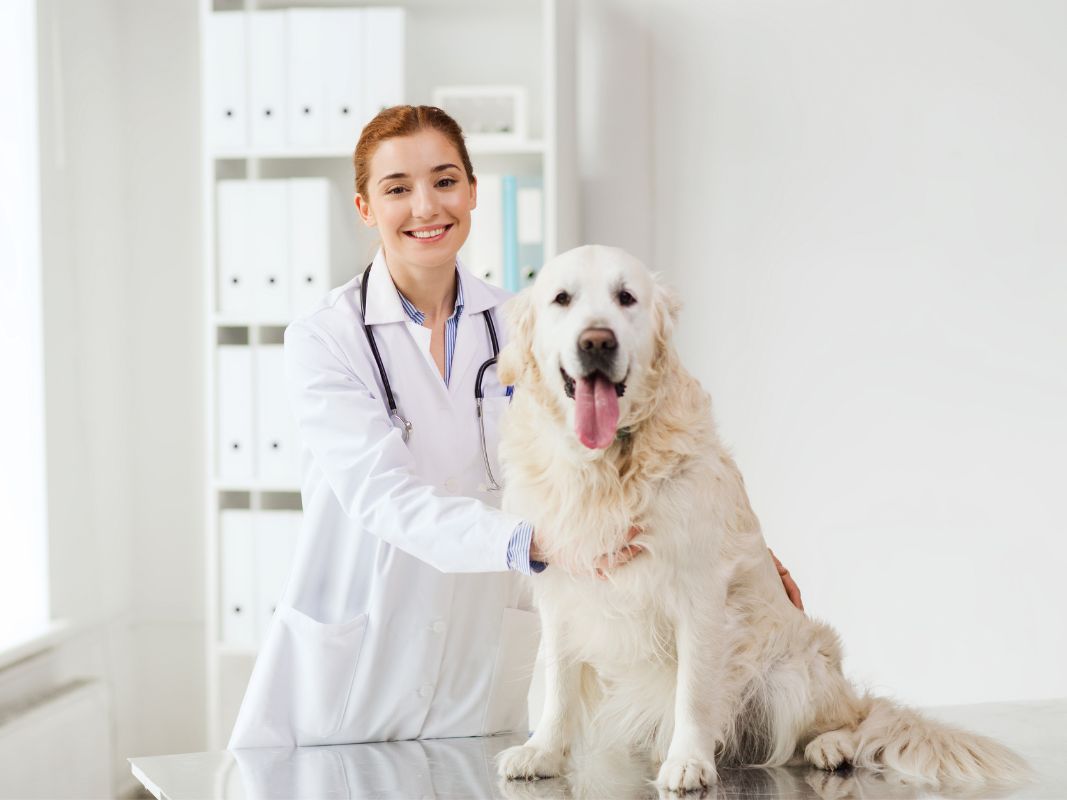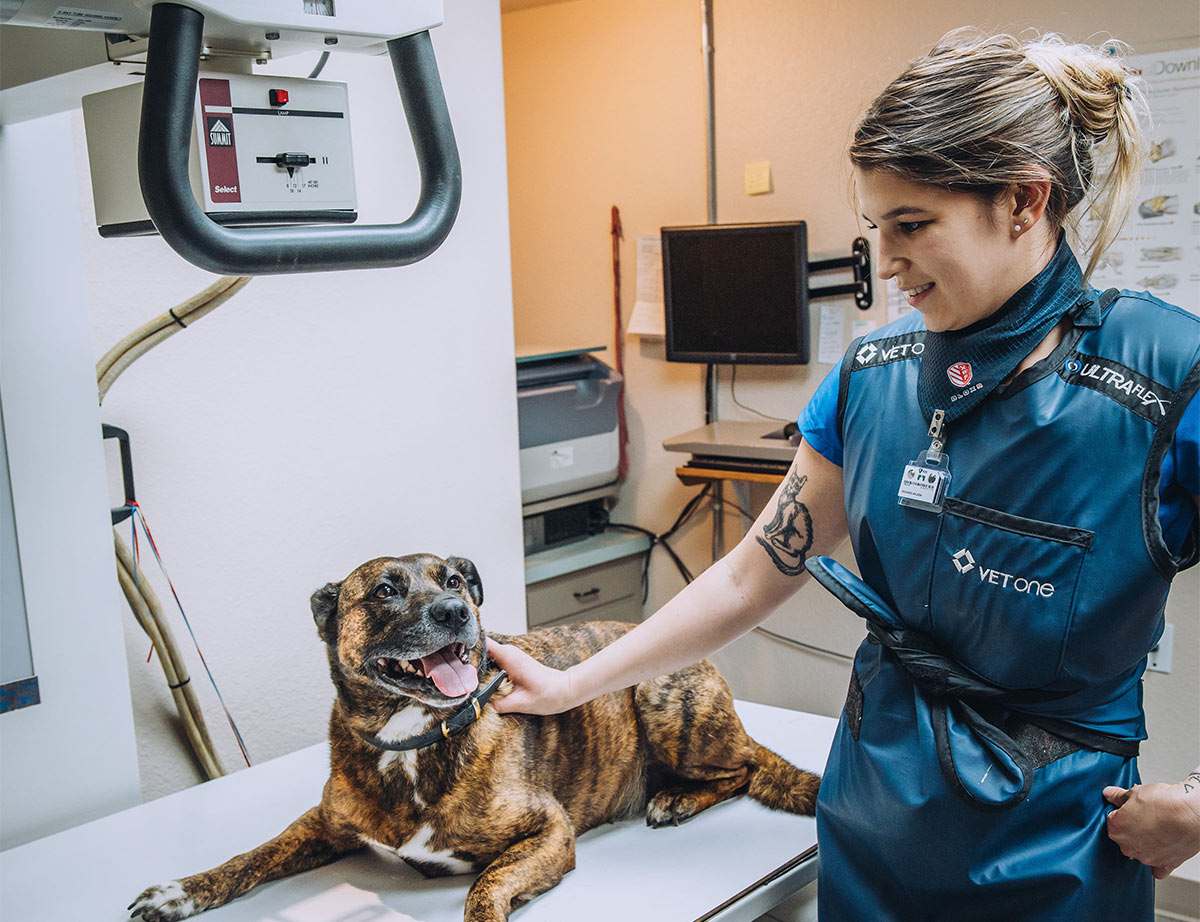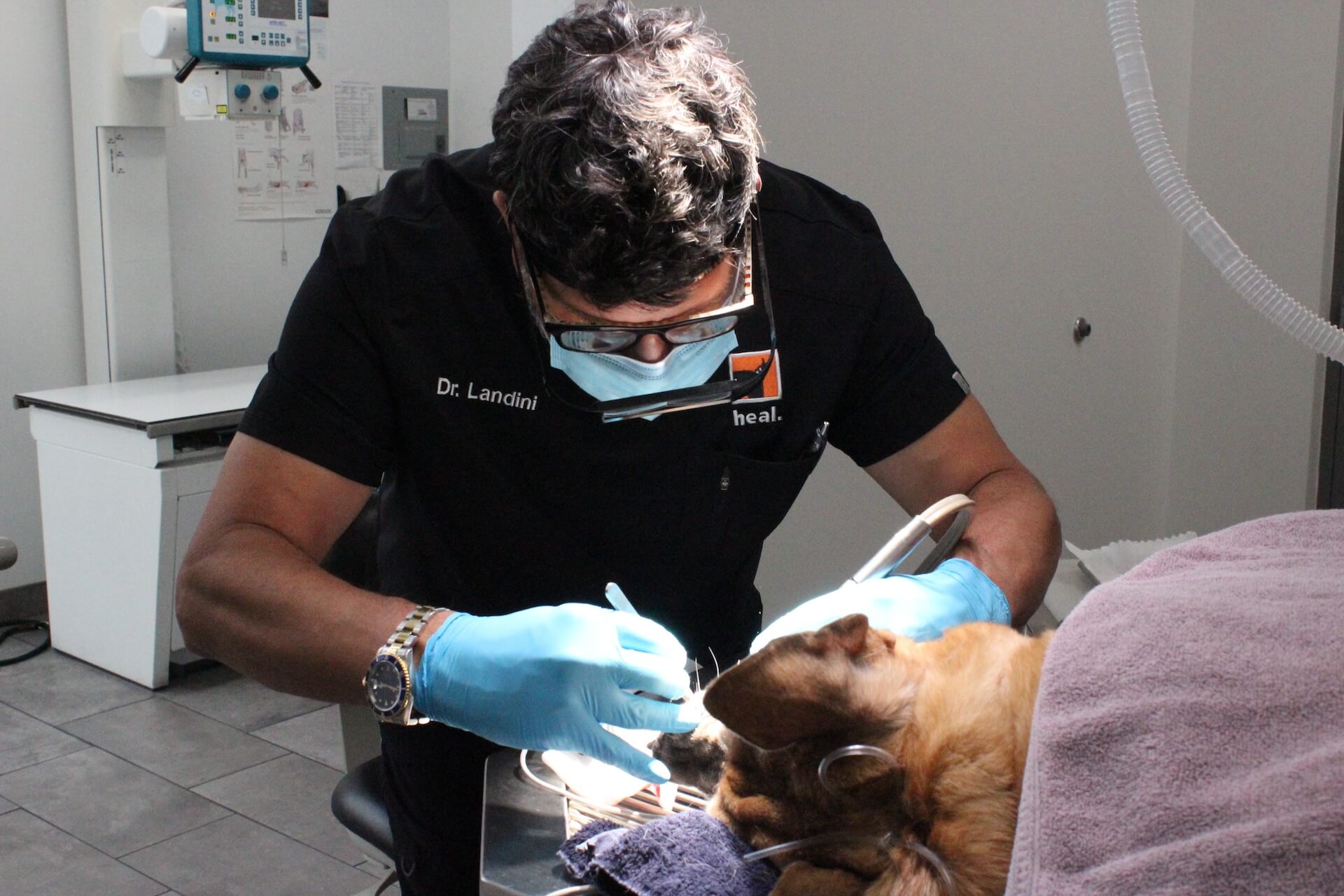Why Pet Rehab Is Important: the Perks of Veterinarian Services for Your Pet dog's Healing
Pet recovery is a vital part of recuperation for pet dogs dealing with injuries or disabilities. Veterinary solutions offer vital assistance via customized rehabilitation strategies that attend to private demands. These plans frequently include discomfort monitoring, physical treatment, and dietary advice. Understanding the numerous aspects of animal rehabilitation can illuminate its importance in enhancing healing outcomes. What specific benefits do these solutions use, and exactly how can they change a pet's recovery trip?
Recognizing Pet Recovery
Pet recovery incorporates a series of healing techniques intended at bring back the health and capability of hurt or impaired animals. This field integrates different techniques, including physical treatment, hydrotherapy, and work-related treatment, tailored to meet the specific requirements of each animal. Rehabilitation professionals analyze a pet's problem, establishing personalized therapy plans that might entail workouts to strengthen muscle mass, enhance movement, and enhance general wellness. The process not only concentrates on physical recovery yet also addresses psychological and behavior aspects. Animals usually experience tension and anxiousness following an injury, making mental health considerations necessary in rehabilitation. By developing a helpful setting, therapists can aid pets reclaim their confidence and adjust to their new situations. Via regular sessions, animals can experience significant enhancements, ultimately causing a better lifestyle. Overall, understanding animal rehabilitation highlights its relevance in advertising healing and enhancing the bond in between family pets and their proprietors.
The Role of Pain Monitoring in Recuperation
Exactly how important works pain monitoring in the recuperation of injured animals? It plays a crucial function in assisting in healing and improving the total health of pets. Proper pain monitoring not just relieves discomfort but also promotes flexibility, enabling pets to take part in rehab tasks required for healing. When discomfort is effectively handled, animals tend to respond positively to therapy, bring about quicker rehab outcomes.Veterinarians make use of various techniques to analyze and deal with pain, including drugs, acupuncture, and different treatments. By tailoring discomfort management techniques to the specific needs of each pet, vets can ensure that pet dogs remain tranquil and participating throughout their healing trip. Reducing discomfort assists reduce stress and anxiety, which can prevent recovery and extend recuperation times. To sum up, effective discomfort management is crucial for boosting the recuperation procedure and enhancing the lifestyle for damaged pets.
Physical Therapy Strategies for Pet Dogs
Various physical therapy methods are offered to aid in the rehabilitation of animals recouping from injuries or surgical procedures (24 hour vet near me). These methods can boost wheelchair, eliminate pain, and promote healing. Therapeutic exercises, for circumstances, aid reinforce muscle mass and improve joint feature, permitting family pets to reclaim their physical capabilities gradually. Hand-operated treatment, which includes massage and mobilization, can relieve tension and enhance circulation, adding to a faster recovery.Other strategies such as passive variety of activity exercises encourage joint versatility and lower rigidity. In addition, electric stimulation therapy might be utilized to promote nerves and muscles, advertising healing and discomfort relief.Veterinary professionals typically customize these strategies to every family pet's specific requirements, ensuring a detailed recovery strategy. By executing these physical treatment techniques, animals can experience enhanced top quality of life and a more successful recuperation from their conditions. The combination of these techniques right into rehab programs is necessary for ideal healing outcomes
Benefits of Hydrotherapy for Rehab
Hydrotherapy provides significant advantages in animal recovery, specifically in enhancing movement. This water-based therapy advertises discomfort alleviation while offering convenience to injured or recuperating pet dogs. Furthermore, it assists in strength-building exercises that add to overall physical healing.
Enhanced Flexibility Renovation
As pets recoup from injuries or surgical treatments, improved wheelchair usually comes to be a main goal of their rehab. Hydrotherapy serves as an important device in achieving this objective. Via water-based workouts, animals can participate in low-impact activities that assist in joint movement and strengthen muscles without the anxiety of weight-bearing tasks. The buoyancy of water supports their bodies, enabling for raised series of movement and movement enhancement. Furthermore, hydrotherapy motivates much better balance and coordination, which are important for bring back typical motion patterns. Normal sessions can lead to considerable progress in a pet's physical capacities, inevitably enhancing their quality of life. This method not just aids in recuperation but also promotes an extra active and meeting lifestyle post-rehabilitation.
Pain Alleviation and Comfort

Remedy for pain is a crucial aspect of pet rehabilitation, and hydrotherapy greatly adds to this procedure. By using water's buoyancy, hydrotherapy minimizes joint anxiety and alleviates pain during motion. This restorative strategy supplies a comforting setting where pet dogs can involve in mild exercises without the full weight of their bodies affecting their recovery. The cozy water boosts blood circulation, promoting recovery while also encouraging leisure. Additionally, hydrotherapy sessions can be tailored to satisfy the details needs of the animal, guaranteeing excellent convenience. As animals experience lowered pain and boosted comfort degrees, their total determination to take part in rehab activities frequently boosts, resulting in an extra effective recovery trip. As a result, hydrotherapy offers as a critical device in enhancing pain alleviation and convenience during rehabilitation.
Strength Building Workouts
Strength-building workouts play a crucial duty in the recovery procedure, with hydrotherapy offering distinct advantages. This kind of therapy utilizes water resistance to boost muscle mass toughness without putting too much strain on the joints. The buoyancy of water sustains the pet's weight, enabling much safer motion and boosted variety of activity. Additionally, hydrotherapy can enhance cardio wellness and promote general physical fitness, aiding in quicker healing from injuries or surgical procedures. The controlled setting additionally minimizes the threat of reinjury, making it an optimal alternative for pets calling for rehabilitation. Regular hydrotherapy sessions can lead to visible improvements in wheelchair, stamina, and endurance, eventually boosting the animal's lifestyle and ability to return to normal activities.
Importance of Personalized Rehabilitation Strategies
Custom-made rehab plans are essential for resolving the one-of-a-kind requirements of each animal, making certain personalized therapy approaches. These plans enable for reliable progression monitoring and essential modifications, fostering excellent healing outcomes. Additionally, an all natural strategy can improve the general health of the pet, advertising a more detailed rehabilitation experience.
Individualized Treatment Approaches
While numerous rehab programs take on a one-size-fits-all strategy, the unique requirements of each pet necessitate customized therapy strategies for optimal healing. Personalized rehab strategies take right into account different factors, consisting of the animal's species, age, medical background, and certain injuries or conditions. By customizing treatments, veterinarians can attend to each family pet's one-of-a-kind obstacles, optimizing the efficiency of the rehabilitation process. Embellished strategies may incorporate different methods such as physical treatment, hydrotherapy, and restorative workouts, ensuring that the therapy aligns with the animal's capabilities and progression. In addition, customized strategies foster a more powerful bond between the pet and the caretaker, advertising a much more engaging and encouraging healing atmosphere. Ultimately, customized therapy is essential for achieving best possible outcomes in animal rehab.
Progression Monitoring and Adjustments

Holistic Healing Techniques
All natural recovery approaches are necessary for reliable pet recovery, as they emphasize the significance of personalized treatment strategies customized per animal's specific requirements. This approach takes into consideration the physical, emotional, and environmental factors impacting recovery. Personalized rehabilitation plans may include a mix of physical treatment, dietary therapy, and behavior alterations. By resolving these varied elements, vets can boost the total health of the pet and advertise a much faster healing. Moreover, such customized strategies facilitate a deeper understanding of the animal's distinct obstacles, leading to a lot more reliable interventions. Eventually, alternative recovery methods not just boost physical wellness however additionally add to the animal's psychological and emotional stability, ensuring an extensive rehab experience.
The Impact of Nourishment on Recuperation
Nourishment plays a vital duty in the recovery process for rehabilitating animals, usually identifying the rate and effectiveness of recovery. A healthy diet regimen gives the necessary nutrients that sustain cells fixing, improve the immune system, and boost overall vigor. Protein is specifically crucial, as it assists in muscular tissue restoring and recuperation from injuries. Necessary fatty acids, vitamins, and minerals likewise contribute to decreasing swelling and promoting ideal mobile function.Veterinarians regularly emphasize the relevance of customized nutrition strategies, taking into consideration each pet's particular needs, age, and health and wellness status. Proper hydration is just as vital, as fluids assist in vitamins and mineral absorption and aid in detoxing. By making certain that family pets obtain suitable nourishment, caretakers can greatly boost their chances of a successful healing, bring about better long-lasting wellness outcomes. Eventually, nourishment offers as a fundamental element in the rehabilitation journey, sustaining pets in regaining stamina and resilience post-injury or disease.
Success Stories: Family Pets That Thrived After Rehabilitation
Successful rehabilitation stories are plentiful, showcasing the durability of animals that have gotten over significant obstacles. Take, for example, Bella, a golden retriever that experienced serious injuries from an auto crash. With committed vet care and a comprehensive rehab program, she regained her mobility and went back to her lively self, much to her owner's joy. Max, a senior pet cat detected with joint inflammation, experienced exceptional enhancement through a combination of physical therapy and discomfort administration. His newfound dexterity permitted him to appreciate his favorite sunbathing places again. One more inspiring situation is that of Coco, a rescued greyhound that overcame anxiety via behavior modification and socialization techniques, enabling her to prosper in her new home. These success tales exhibit the transformative power of animal rehabilitation, stressing that with the best assistance, family pets can not only recoup however lead fulfilling lives, improving the bonds they show their families.
Regularly Asked Inquiries
The length of time Does the Rehab Refine Typically Consider Animals?
The rehabilitation procedure for pets normally varies based upon the injury or condition, varying from a couple of weeks to numerous months. Private progression, treatment kind, and commitment to workouts greatly affect the overall period of recuperation.
Are There Any Threats Linked With Pet Rehab?
Pet recovery may bring threats such as worsening of injuries, incorrect strategies causing discomfort, or inadequate surveillance during recuperation. These elements can prevent progress and affect the general performance of the rehabilitation process.

Can All Pets Take Advantage Of Rehabilitation Solutions?
Not all pets might require rehab, yet many can benefit greatly. Rehab solutions can enhance movement, relieve discomfort, and enhance general health, especially for those recovering from injuries, surgical procedures, or persistent problems.
How Can I Prepare My Family Pet for Recovery Procedure?

What Indications Show My Animal Demands Rehabilitation?
Indications suggesting an animal might require recovery consist of trouble strolling, hopping, lowered task levels, unwillingness to jump, or indications of pain. Observing these actions can prompt proprietors to look for expert examination and treatment for their pet dogs.